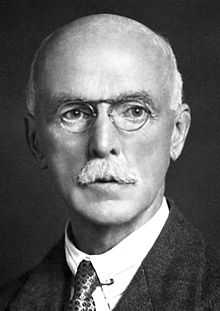Nicotinamide adenine dinucleotide

| |

| |
| Names | |
|---|---|
| Other names
Diphosphopyridine nucleotide (DPN+), Coenzyme I
| |
| Identifiers | |
3D model (
JSmol ) |
|
| ChEBI | |
| ChEMBL | |
| ChemSpider | |
| DrugBank | |
ECHA InfoCard
|
100.000.169 |
IUPHAR/BPS |
|
| KEGG | |
PubChem CID
|
|
RTECS number
|
|
| UNII |
|
| |
| |
| Properties | |
| C21H28N7O14P2[1][2] | |
| Molar mass | 663.43 g/mol |
| Appearance | White powder |
| Melting point | 160 °C (320 °F; 433 K) |
| Hazards | |
| Occupational safety and health (OHS/OSH): | |
Main hazards
|
Not hazardous |
| NFPA 704 (fire diamond) | |
Except where otherwise noted, data are given for materials in their standard state (at 25 °C [77 °F], 100 kPa).
| |
Nicotinamide adenine dinucleotide (NAD) is a coenzyme central to metabolism.[3] Found in all living cells, NAD is called a dinucleotide because it consists of two nucleotides joined through their phosphate groups. One nucleotide contains an adenine nucleobase and the other, nicotinamide. NAD exists in two forms: an oxidized and reduced form, abbreviated as NAD+ and NADH (H for hydrogen), respectively.
In cellular metabolism, NAD is involved in redox reactions, carrying
In organisms, NAD can be synthesized from simple building-blocks (
Some NAD is converted into the coenzyme
In the name NAD+, the superscripted plus sign indicates the positive formal charge on one of its nitrogen atoms.
Physical and chemical properties
Nicotinamide adenine dinucleotide consists of two

The compound accepts or donates the equivalent of H−.[6] Such reactions (summarized in formula below) involve the removal of two hydrogen atoms from the reactant (R), in the form of a hydride ion (H−), and a proton (H+). The proton is released into solution, while the reductant RH2 is oxidized and NAD+ reduced to NADH by transfer of the hydride to the nicotinamide ring.
- RH2 + NAD+ → NADH + H+ + R;
From the hydride electron pair, one electron is attracted to the slightly more electronegative atom of the nicotinamide ring of NAD+, becoming part of the nicotinamide moiety. The second electron and proton atom are transferred to the carbon atom adjacent to the N atom. The midpoint potential of the NAD+/NADH redox pair is −0.32 volts, which makes NADH a moderately strong reducing agent.[7] The reaction is easily reversible, when NADH reduces another molecule and is re-oxidized to NAD+. This means the coenzyme can continuously cycle between the NAD+ and NADH forms without being consumed.[5]
In appearance, all forms of this coenzyme are white amorphous powders that are hygroscopic and highly water-soluble.[8] The solids are stable if stored dry and in the dark. Solutions of NAD+ are colorless and stable for about a week at 4 °C and neutral pH, but decompose rapidly in acidic or alkaline solutions. Upon decomposition, they form products that are enzyme inhibitors.[9]

Both NAD+ and NADH strongly absorb
NAD+ and NADH also differ in their fluorescence. Freely diffusing NADH in aqueous solution, when excited at the nicotinamide absorbance of ~335 nm (near-UV), fluoresces at 445–460 nm (violet to blue) with a fluorescence lifetime of 0.4 nanoseconds, while NAD+ does not fluoresce.[11][12] The properties of the fluorescence signal changes when NADH binds to proteins, so these changes can be used to measure dissociation constants, which are useful in the study of enzyme kinetics.[12][13] These changes in fluorescence are also used to measure changes in the redox state of living cells, through fluorescence microscopy.[14]
NADH can be converted to NAD+ in a reaction catalysed by copper, which requires hydrogen peroxide. Thus, the supply of NAD+ in cells requires mitochondrial copper(II).[15][16]
Concentration and state in cells
In rat liver, the total amount of NAD+ and NADH is approximately 1
NAD+ concentrations are highest in the mitochondria, constituting 40% to 70% of the total cellular NAD+.[22] NAD+ in the cytosol is carried into the mitochondrion by a specific membrane transport protein, since the coenzyme cannot diffuse across membranes.[23] The intracellular half-life of NAD+ was claimed to be between 1–2 hours by one review,[24] whereas another review gave varying estimates based on compartment: intracellular 1–4 hours, cytoplasmic 2 hours, and mitochondrial 4–6 hours.[25]
The balance between the oxidized and reduced forms of nicotinamide adenine dinucleotide is called the NAD+/NADH ratio. This ratio is an important component of what is called the redox state of a cell, a measurement that reflects both the metabolic activities and the health of cells.[26] The effects of the NAD+/NADH ratio are complex, controlling the activity of several key enzymes, including glyceraldehyde 3-phosphate dehydrogenase and pyruvate dehydrogenase. In healthy mammalian tissues, estimates of the ratio of free NAD+ to NADH in the cytoplasm typically lie around 700:1; the ratio is thus favorable for oxidative reactions.[27][28] The ratio of total NAD+/NADH is much lower, with estimates ranging from 3–10 in mammals.[29] In contrast, the NADP+/NADPH ratio is normally about 0.005, so NADPH is the dominant form of this coenzyme.[30] These different ratios are key to the different metabolic roles of NADH and NADPH.
Biosynthesis
NAD+ is synthesized through two metabolic pathways. It is produced either in a
De novo production

Most organisms synthesize NAD+ from simple components.[6] The specific set of reactions differs among organisms, but a common feature is the generation of quinolinic acid (QA) from an amino acid – either tryptophan (Trp) in animals and some bacteria, or aspartic acid (Asp) in some bacteria and plants.[32][33] The quinolinic acid is converted to nicotinic acid mononucleotide (NaMN) by transfer of a phosphoribose moiety. An adenylate moiety is then transferred to form nicotinic acid adenine dinucleotide (NaAD). Finally, the nicotinic acid moiety in NaAD is amidated to a nicotinamide (Nam) moiety, forming nicotinamide adenine dinucleotide.[6]
In a further step, some NAD+ is converted into NADP+ by

Salvage pathways
Despite the presence of the de novo pathway, the salvage reactions are essential in humans; a lack of niacin in the diet causes the vitamin deficiency disease pellagra.[37] This high requirement for NAD+ results from the constant consumption of the coenzyme in reactions such as posttranslational modifications, since the cycling of NAD+ between oxidized and reduced forms in redox reactions does not change the overall levels of the coenzyme.[6] The major source of NAD+ in mammals is the salvage pathway which recycles the nicotinamide produced by enzymes utilizing NAD+.[38] The first step, and the rate-limiting enzyme in the salvage pathway is nicotinamide phosphoribosyltransferase (NAMPT), which produces nicotinamide mononucleotide (NMN).[38] NMN is the immediate precursor to NAD+ in the salvage pathway.[39]
Besides assembling NAD+ de novo from simple amino acid precursors, cells also salvage preformed compounds containing a pyridine base. The three vitamin precursors used in these salvage metabolic pathways are nicotinic acid (NA), nicotinamide (Nam) and nicotinamide riboside (NR).[6] These compounds can be taken up from the diet and are termed vitamin B3 or niacin. However, these compounds are also produced within cells and by digestion of cellular NAD+. Some of the enzymes involved in these salvage pathways appear to be concentrated in the cell nucleus, which may compensate for the high level of reactions that consume NAD+ in this organelle.[40] There are some reports that mammalian cells can take up extracellular NAD+ from their surroundings,[41] and both nicotinamide and nicotinamide riboside can be absorbed from the gut.[42]
The salvage pathways used in
Functions

Nicotinamide adenine dinucleotide has several essential roles in
Oxidoreductase binding of NAD
The main role of NAD+ in metabolism is the transfer of electrons from one molecule to another. Reactions of this type are catalyzed by a large group of enzymes called
There are many different superfamilies of enzymes that bind NAD+ / NADH. One of the most common superfamilies includes a structural motif known as the Rossmann fold.[52][53] The motif is named after Michael Rossmann, who was the first scientist to notice how common this structure is within nucleotide-binding proteins.[54]
An example of a NAD-binding bacterial enzyme involved in amino acid metabolism that does not have the Rossmann fold is found in Pseudomonas syringae pv. tomato (PDB: 2CWH; InterPro: IPR003767).[55]

When bound in the active site of an oxidoreductase, the nicotinamide ring of the coenzyme is positioned so that it can accept a hydride from the other substrate. Depending on the enzyme, the hydride donor is positioned either "above" or "below" the plane of the planar C4 carbon, as defined in the figure. Class A oxidoreductases transfer the atom from above; class B enzymes transfer it from below. Since the C4 carbon that accepts the hydrogen is
Despite the similarity in how proteins bind the two coenzymes, enzymes almost always show a high level of specificity for either NAD+ or NADP+.
Role in redox metabolism

The redox reactions catalyzed by oxidoreductases are vital in all parts of metabolism, but one particularly important area where these reactions occur is in the release of energy from nutrients. Here, reduced compounds such as
Since both the oxidized and reduced forms of nicotinamide adenine dinucleotide are used in these linked sets of reactions, the cell maintains significant concentrations of both NAD+ and NADH, with the high NAD+/NADH ratio allowing this coenzyme to act as both an oxidizing and a reducing agent.[62] In contrast, the main function of NADPH is as a reducing agent in anabolism, with this coenzyme being involved in pathways such as fatty acid synthesis and photosynthesis. Since NADPH is needed to drive redox reactions as a strong reducing agent, the NADP+/NADPH ratio is kept very low.[62]
Although it is important in catabolism, NADH is also used in anabolic reactions, such as gluconeogenesis.[63] This need for NADH in anabolism poses a problem for prokaryotes growing on nutrients that release only a small amount of energy. For example, nitrifying bacteria such as Nitrobacter oxidize nitrite to nitrate, which releases sufficient energy to pump protons and generate ATP, but not enough to produce NADH directly.[64] As NADH is still needed for anabolic reactions, these bacteria use a nitrite oxidoreductase to produce enough proton-motive force to run part of the electron transport chain in reverse, generating NADH.[65]
Non-redox roles
The coenzyme NAD+ is also consumed in ADP-ribose transfer reactions. For example, enzymes called

Another function of this coenzyme in cell signaling is as a precursor of cyclic ADP-ribose, which is produced from NAD+ by ADP-ribosyl cyclases, as part of a second messenger system.[73] This molecule acts in calcium signaling by releasing calcium from intracellular stores.[74] It does this by binding to and opening a class of calcium channels called ryanodine receptors, which are located in the membranes of organelles, such as the endoplasmic reticulum, and inducing the activation of the transcription factor NAFC3[75]
NAD+ is also consumed by different NAD+-consuming enzymes, such as
Other NAD-dependent enzymes include bacterial
Li et al. have found that NAD+ directly regulates protein-protein interactions.[83] They also show that one of the causes of age-related decline in DNA repair may be increased binding of the protein DBC1 (Deleted in Breast Cancer 1) to PARP1 (poly[ADP–ribose] polymerase 1) as NAD+ levels decline during aging.[83] The decline in cellular concentrations of NAD+ during aging likely contributes to the aging process and to the pathogenesis of the chronic diseases of aging.[84] Thus, the modulation of NAD+ may protect against cancer, radiation, and aging.[83]
Extracellular actions of NAD+
In recent years, NAD+ has also been recognized as an
Clinical significance
The enzymes that make and use NAD+ and NADH are important in both pharmacology and the research into future treatments for disease.[93] Drug design and drug development exploits NAD+ in three ways: as a direct target of drugs, by designing enzyme inhibitors or activators based on its structure that change the activity of NAD-dependent enzymes, and by trying to inhibit NAD+ biosynthesis.[94]
Because cancer cells utilize increased glycolysis, and because NAD enhances glycolysis, nicotinamide phosphoribosyltransferase (NAD salvage pathway) is often amplified in cancer cells.[95][96]
It has been studied for its potential use in the therapy of
NAD+ is also a direct
Since many oxidoreductases use NAD+ and NADH as substrates, and bind them using a highly conserved structural motif, the idea that inhibitors based on NAD+ could be specific to one enzyme is surprising.
Because of the differences in the metabolic pathways of NAD+ biosynthesis between organisms, such as between bacteria and humans, this area of metabolism is a promising area for the development of new antibiotics.[109][110] For example, the enzyme nicotinamidase, which converts nicotinamide to nicotinic acid, is a target for drug design, as this enzyme is absent in humans but present in yeast and bacteria.[43]
In bacteriology, NAD, sometimes referred to factor V, is used as a supplement to culture media for some fastidious bacteria.[111]
History

The coenzyme NAD+ was first discovered by the British biochemists
Vitamin precursors of NAD+ were first identified in 1938, when Conrad Elvehjem showed that liver has an "anti-black tongue" activity in the form of nicotinamide.[115] Then, in 1939, he provided the first strong evidence that niacin is used to synthesize NAD+.[116] In the early 1940s, Arthur Kornberg was the first to detect an enzyme in the biosynthetic pathway.[117] In 1949, the American biochemists Morris Friedkin and Albert L. Lehninger proved that NADH linked metabolic pathways such as the citric acid cycle with the synthesis of ATP in oxidative phosphorylation.[118] In 1958, Jack Preiss and Philip Handler discovered the intermediates and enzymes involved in the biosynthesis of NAD+;[119][120] salvage synthesis from nicotinic acid is termed the Preiss-Handler pathway. In 2004, Charles Brenner and co-workers uncovered the nicotinamide riboside kinase pathway to NAD+.[121]
The non-redox roles of NAD(P) were discovered later.[5] The first to be identified was the use of NAD+ as the ADP-ribose donor in ADP-ribosylation reactions, observed in the early 1960s.[122] Studies in the 1980s and 1990s revealed the activities of NAD+ and NADP+ metabolites in cell signaling – such as the action of cyclic ADP-ribose, which was discovered in 1987.[123]
The metabolism of NAD+ remained an area of intense research into the 21st century, with interest heightened after the discovery of the NAD+-dependent protein deacetylases called sirtuins in 2000, by Shin-ichiro Imai and coworkers in the laboratory of Leonard P. Guarente.[124] In 2009 Imai proposed the "NAD World" hypothesis that key regulators of aging and longevity in mammals are sirtuin 1 and the primary NAD+ synthesizing enzyme nicotinamide phosphoribosyltransferase (NAMPT).[125] In 2016 Imai expanded his hypothesis to "NAD World 2.0", which postulates that extracellular NAMPT from adipose tissue maintains NAD+ in the hypothalamus (the control center) in conjunction with myokines from skeletal muscle cells.[126] In 2018, Napa Therapeutics was formed to develop drugs against a novel aging related target based on the research in NAD metabolism conducted in the lab of Eric Verdin.[127]
See also
References
- ^ "NAD+ | C21H28N7O14P2 | ChemSpider". www.chemspider.com.
- ^ "Nicotinamide-Adenine-Dinucleotide". pubchem.ncbi.nlm.nih.gov.
- ISBN 0-7167-4339-6.
- ^ The nicotinamide group can be attached in two orientations to the anomeric ribose carbon atom. Because of these two possible structures, the NAD could exists as either of two diastereomers. It is the β-nicotinamide diastereomer of NAD+ that is found in nature.
- ^ PMID 17295611.
- ^ PMID 17161604.
- PMID 9230919.
- ISBN 978-0-911910-27-8.
- PMID 218616.
- ^ ISBN 978-0-19-855358-8.
- PMID 24874098.
- ^ PMID 1741380.
- PMID 2910350.
- PMID 16461578.
- S2CID 24264851.
- S2CID 258353949.
- PMID 6486402.
- PMID 16574057.
- PMID 17889652.
- S2CID 4661723.
- PMID 15709771.
- PMID 31412683.
- PMID 16291748.
- PMID 27465020.
- PMID 29413178.
- PMID 11368918.
- PMID 4291787.
- S2CID 31268989.
- PMID 12648681.
- PMID 4391039.
- PMID 32097708.
- PMID 16698895.
- PMID 6997723.
- PMID 16842123.
- PMID 16085824.
- PMID 15182203.
- PMID 6357238.
- ^ PMID 29514064.
- ^ "What is NMN?". www.nmn.com. Retrieved 8 January 2021.
- PMID 11884393.
- PMID 18180302.
- PMID 27721479.
- ^ PMID 12815723.
- S2CID 22282128.
- S2CID 29776509.
- PMID 12142426.
- PMID 15953771.
- ^ PMID 15364945.
- ^ PMID 17380199.
- ^ "Enzyme Nomenclature, Recommendations for enzyme names from the Nomenclature Committee of the International Union of Biochemistry and Molecular Biology". Archived from the original on 5 December 2007. Retrieved 6 December 2007.
- ^ "NiceZyme View of ENZYME: EC 1.6.5.3". Expasy. Retrieved 16 December 2007.
- S2CID 11857160.
- PMID 8749365.
- PMID 4737475.
- PMID 16192274.
- ^ S2CID 24189316.
- S2CID 23969986.
- PMID 17032644.
- PMID 11152939.
- S2CID 32361233.
- PMID 16668101.
- ^ ISBN 978-0-12-518121-1.
- PMID 4044607.
- .
- PMID 16517654.
- PMID 10712584.
- ^ PMID 15868397.
- S2CID 8820773.
- PMID 12727863.
- ^ S2CID 22975714.
- PMID 15078170.
- PMID 19820715.
- PMID 15078169.
- PMID 15101682.
- S2CID 21509962.
- PMID 15128440.
- ^ S2CID 27313960.
- S2CID 27494475.
- PMID 17100594.
- ^ PMID 35994674.
- S2CID 19909818.
- PMID 9271115.
- ^ PMID 28336669.
- ^ Verdin E. NAD⁺ in aging, metabolism, and neurodegeneration. Science. 2015 Dec 4;350(6265):1208-13. doi: 10.1126/science.aac4854. PMID: 26785480
- PMID 15352307.
- S2CID 4333147.
- S2CID 11400206.
- ^ PMID 17913880.
- ^ PMID 20875415.
- PMID 19712094.
- PMID 22276961.
- PMID 28722654.
- S2CID 875753.
- S2CID 6490887.
- PMID 30631755.
- PMID 32111066.
- PMID 19149604.
- S2CID 10683162.
- S2CID 43379861.
- PMID 14623976.
- S2CID 7721666.
- ^ PMID 15083807.
- S2CID 247868867.
- PMID 19017485.
- S2CID 1662390.
- S2CID 4395572.
- S2CID 52851999.
- PMID 24360282.
- PMID 12504674.
- PMID 11153263.
- ^ "Meningitis Lab Manual: ID and Characterization of Hib | CDC". www.cdc.gov. 30 March 2021.
- JSTOR 80144.
- ^ "Fermentation of sugars and fermentative enzymes" (PDF). Nobel Lecture, 23 May 1930. Nobel Foundation. Archived from the original (PDF) on 27 September 2007. Retrieved 30 September 2007.
- .
- .
- .
- PMID 18098602.
- PMID 18116985.
- PMID 13563526.
- PMID 13563527.
- S2CID 4642295.
- PMID 14019961.
- PMID 3496336.
- S2CID 2967911.
- PMID 19130305.
- PMID 28725474.
- ^ "Napa Therapeutics Formed to Develop Drugs to Influence NAD Metabolism". Fight Aging!. 17 August 2018. Retrieved 29 November 2023.
Further reading
Function
- Nelson DL; Cox MM (2004). Lehninger Principles of Biochemistry (4th ed.). W. H. Freeman. ISBN 978-0-7167-4339-2.
- Bugg T (2004). Introduction to Enzyme and Coenzyme Chemistry (2nd ed.). Blackwell Publishing Limited. ISBN 978-1-4051-1452-3.
- Lee HC (2002). Cyclic ADP-Ribose and NAADP: Structure, Metabolism and Functions. Kluwer Academic Publishers. ISBN 978-1-4020-7281-9.
- Levine OS, Schuchat A, Schwartz B, Wenger JD, Elliott J (1997). "Generic protocol for population-based surveillance of Haemophilus influenzae type B" (PDF). World Health Organization. Centers for Disease Control. p. 13. WHO/VRD/GEN/95.05. Archived from the original (PDF) on 1 July 2004.
- Kim, Jinhyun; Lee, Sahng Ha; Tieves, Florian; Paul, Caroline E.; Hollmann, Frank; Park, Chan Beum (5 July 2019). "Nicotinamide adenine dinucleotide as a photocatalyst". Science Advances. 5 (7): eaax0501. PMID 31334353.
History
- ISBN 978-84-370-3328-0., A history of early enzymology.
- Williams, Henry Smith (1904). Modern Development of the Chemical and Biological Sciences. A History of Science: in Five Volumes. Vol. IV. New York: Harper and Brothers., a textbook from the 19th century.
External links
- NAD bound to proteins in the Protein Data Bank
- NAD Animation (Flash Required)
- β-Nicotinamide adenine dinucleotide (NAD+, oxidized) and NADH (reduced) Chemical data sheet from Sigma-Aldrich
- NAD+, NADH and NAD synthesis pathway at the MetaCyc database
- List of oxidoreductases at the SWISS-PROTdatabase
- NAD+
- NAD+ The Molecule of Youth

